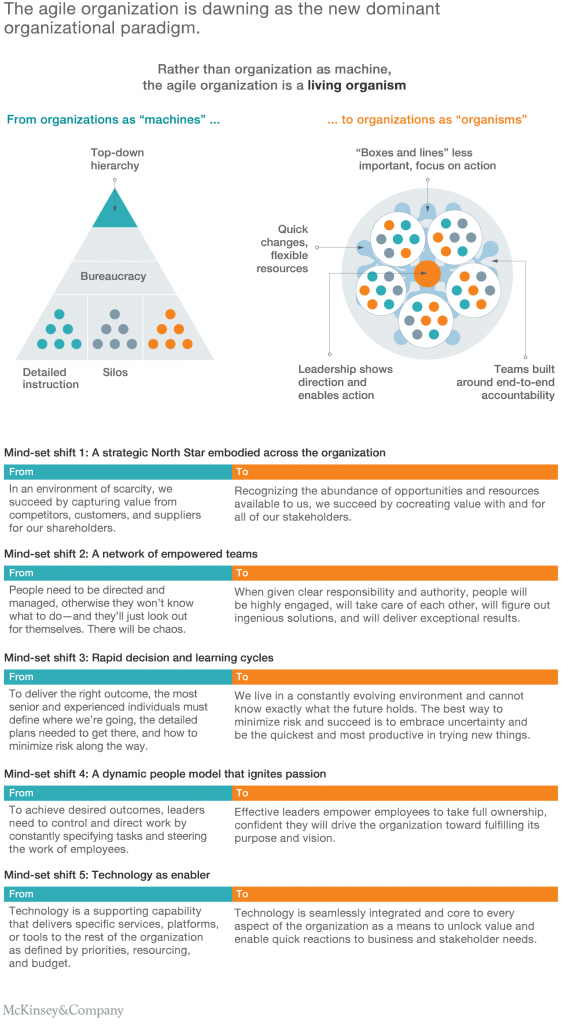Origen: The agile manager | McKinsey & Company
Today’s agile organizations are building on these ideas (for more on the shift underway, see sidebar, “The agile revolution”). The squad leader is now a part of an agile matrix, where the value-creation, or tribe, leaders provide constant direction and prioritization around where the value is, and the capability, or chapter, leaders focus on ensuring deep functional expertise, common tools and competencies, and economies of scale and skill. If these leaders can become effective, nonintrusive managers, the agile company will enjoy the best of both worlds: the benefits of size and scale typically realized in large organizations, as well as the benefits of speed and nimbleness often associated with small entrepreneurial start-ups.
…the typical agile company employs a dynamic matrix structure with two types of reporting lines: a capability line and a value-creation line. Nearly all employees have both a functional reporting line, which is their long-term home in the company, and a value-creation reporting line, which sets the objectives and business needs they take on in squads.
In agile parlance, the capability reporting lines are often called “chapters” and are similar in some ways to functions in traditional organizations (you might have a “web developers” chapter, say, or a “research” chapter).…
The value-creation reporting lines are often called “tribes.” They focus on making money and delivering value to customers (you might have a “mortgage services” tribe or a “mobile products” tribe).…

